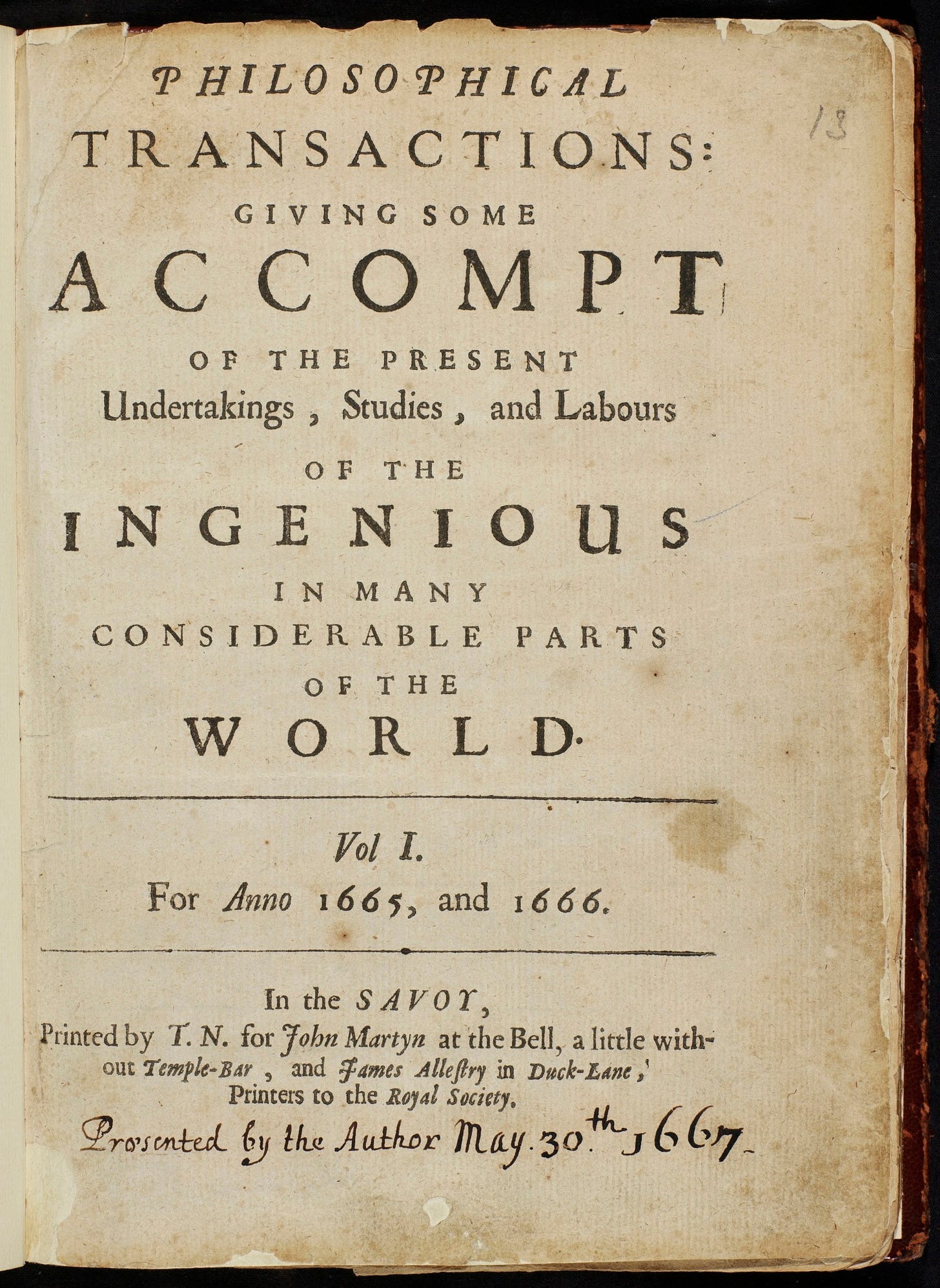Research Papers Used to Have Style. What Happened? (NewScience)
A Brief History of Scientific Writing Style
NewScience just published an essay I wrote — “Research Papers Used to Have Style. What Happened?” Big thanks to Alexey Guzey for sponsoring this piece and an even bigger thanks to Niko Mccarty for his excellent editing work.
I understand that an essay about style in scientific writing might not be everyone’s bag, but I think the essay has some content that should be interesting to scientists and non-scientists alike: the evolution of a field’s writing style in response to changing economics and social dynamics, the importance of writing to creativity, why attention to style and aesthetics are important for scientists and thinkers of all kinds.
Here is an excerpt from the introduction, you can head to the NewScience Substack for the full essay.
The advocates of the new science in the seventeenth century so reacted against the excesses of stylistic artistry that a reluctance to use any artistry at all seems to have prevailed ever since.
Since the founding of the first scientific journal in 1665, there have been calls to do away with stylistic elements in favor of clarity, concision, and precision.
In 1667, Thomas Sprat urged members of the Royal Society to “reject all the amplifications, digressions, and swellings of style; to return back to the primitive purity, and shortness, when men delivered so many things, almost in an equal number of words.” Some 200 years later, Charles Darwin said much the same: “I think too much pains cannot be taken in making the style transparently clear and throwing eloquence to the dogs” (Aaronson, 1977).
Darwin and Sprat eventually got their way. Modern scientific writing is homogenous, cookie-cutter, devoid of style. But scientific papers weren’t always like this.
Writing in The Last Word On Nothing blog, science journalist Roberta Kwok explains how old articles differ from their modern counterparts:
1. Scientists used to admit when they don’t know what the hell is going on.
When philosopher Pierre Gassendi tried to capture observations of Mercury passing in front of the Sun in 1631, he was beset by doubts:
“[T]hrown into confusion, I began to think that an ordinary spot would hardly pass over that full distance in an entire day. And I was undecided indeed… I wondered if perhaps I could not have been wrong in some way about the distance measured earlier.”
[see the article for further examples]
All this to say: Scientists in the pre-modern era wrote freely, despite calls to do away with that freedom. At some point, narrative and literary styles vanished and were replaced with rigid formats and impoverished prose. The question now is: Have we gone too far in removing artistry from scientific writing?
Links/Further Reading
Seeds of Science — a scientific journal I co-founded that encourages speculative and non-traditional writing styles.
“How to Become a World Historical Figure” — specifically the “Art and Reason” section where I argue that a lack of aesthetics in science (beauty, emotion, wonder, etc.) leads to a lack of creativity and diversity of thought.
“Exegesis” — wherein I discuss the nature of scientific creativity and how we might enhance it.



What happened to the WHF guy. They never replied to my email